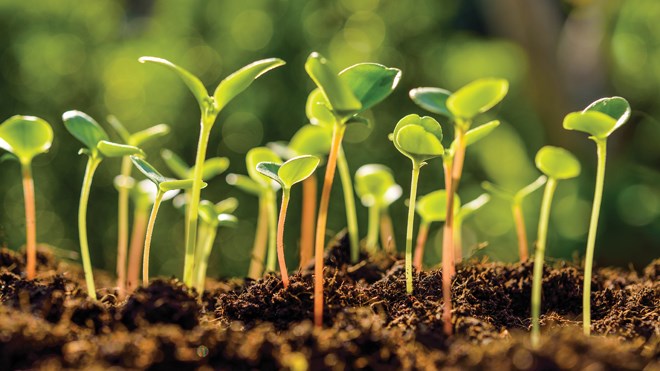March can be the hardest month of the year for many Canadians. Gone is the sunshine of February, and so close is the promise of April; but right now, it’s sand-covered slush and the almost teenage threat of “going out like a lion.” If it was possible to bribe a groundhog, they would be the richest of the rodents.
However, most gardeners have discovered a way through, as much as possible. That path is found in colourful, hopeful, plant-filled seed catalogs.
But those seed catalogs, as well as online finds or even the racks at department stores, can be like handing a hoagie to someone who’s starving. Too much, all at once, and not necessarily the best choice. No offense to hoagies.
Luckily, there is guidance available through the Sudbury Master Gardeners, and if you can spare yourself the temptation to go all out as soon as you see a seed packet, you can have the garden everyone goes out of their way to walk past.
Jenny Fortier, master gardener in training and owner of Northern Wildflowers of Sudbury, says that not only can purchasing the right seeds help the established gardener, but it might also help those who think they have a black thumb.
“Most people struggle with their garden not because they’re not good at it, but because they don’t start with the right materials,” says Fortier. “They end up buying plants and seeds that are not rated for our zone unfortunately – because the folks who are selling these things are leaving it to the consumer to know what they want and need, so they’ll have things on their shelf that just don’t do well here.”
Her advice, like many, is to shop local. If you buy from an Ontario-based supplier, chances are those seeds were grown by farmers near their headquarters – giving you seeds already acclimatized to our region. Fortier has some recommendations.
“One that I really like, and I retail their seeds, is Cottage Gardener, they have hundreds of vegetable seeds, really great varieties of heirlooms and rare stuff that’s passed down. For flower seeds, it depends what you’re looking for. I retail seeds, and there is also a wildflower farm which is based in Coldwater, Ontario, so they’re also local. For ornamental flowers, OSC Seeds (Ontario Seed Co. Ltd.) They’re pretty good, based in Ontario as well.”
Seeds, dried and stored properly, have a viability of about three to five years. But that information is not usually stored on the seed packet – sure, there is an expiry, but what does that mean about its beginning? It’s important information to have, because you probably won’t be using the whole packet in one season. Fortier notes that by choosing a reputable seed supplier, you have the freedom to ask these questions – what season did it come from, how it was stored etc. – as well as some of the more environmentally pertinent ones.
For instance, is it coated with neonicotinoids?
“It’s a chemical that has finally been recognized as a chemical that is dangerous for pollinators like honeybees and bumblebees, and it’s often used to coat seeds,” says Fortier. “It’s a chemical that basically prevents different moulds and what not from growing on plant parts.”
While it is not required of companies to put their use of neonicotinoids on the seed package, those that do not use it are proud of it, so they’ll make mention. Look for words like “untreated,” “organic,” and “doesn’t contain neonicotinoids” to put it plainly. Fortier also mentions that in lieu of the chemical, you can avoid rot and mould issues by sprinkling your seeds with perlite (a natural product) when you plant them.
If you plan to find the perfect variety and keep the seeds each year, you should look for an open-pollinated seed, meaning the seed will reproduce the parent plant. If you choose a hybrid, you may not get the same plant you initially grew.
And if you don’t use your whole seed packet in one season, Fortier advises storing the remaining seeds in a plastic bag, with a bit of water-wicking material like vermiculite, or a package of silica (like those found in shoe boxes.)
And though it is tempting to buy seeds based on their future appearance, northern gardeners will have to be focused on season length – the number of days to harvest usually listed on the seed package.
“There are varieties that go from 80 days to 120 days, so depending when you put your plants in you are really going to struggle to get 120 days in our season,” says Fortier. “Especially since you can’t put them into too early, and our fall has been really all over the place.”
But other than that, your chosen variety will be found through experimentation, trial, and most certainly error. While you can start your search on the internet looking for clues, you may find yourself overwhelmed with information. Fortier recommends having a good ole’ conversation with a gardener. There is nothing like firsthand knowledge – especially with such a specific and challenging climate.
So while the promise of spring may have you frothing at the mouth, clinging desperately to packets of seeds found on turnstiles. Do yourself a favour, and resist. Your garden will love you for it.
Jenny Lamothe is a freelance writer, proof-reader and editor in Greater Sudbury. Contact her through her website, JennytheWriter.wordpress.com.
